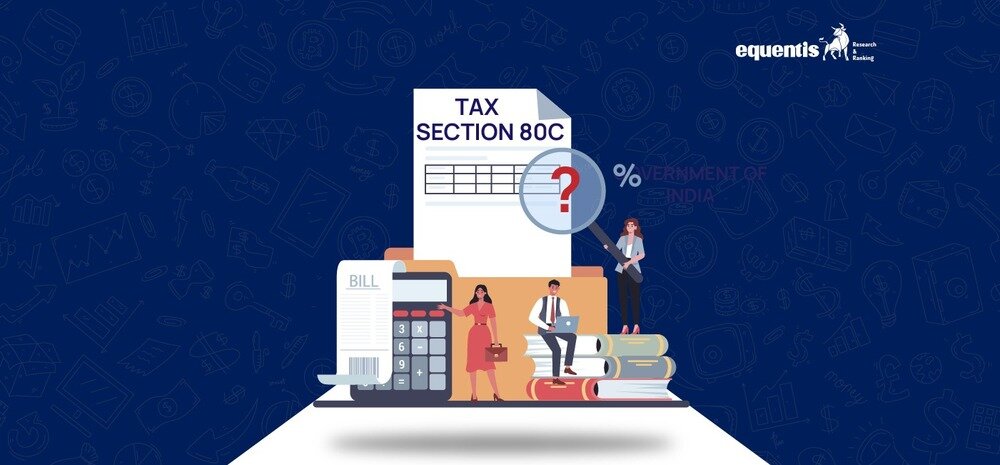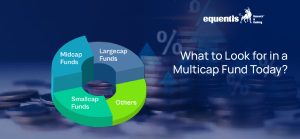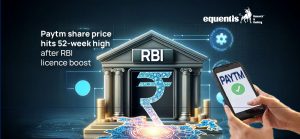Navigating the intricacies of the Employees’ Provident Fund (EPF) can be daunting, especially when you switch jobs. Understanding your new employer’s EPF structure is crucial to maximizing your benefits and avoiding potential tax pitfalls.
Not knowing the status of your EPF trust can result in missed tax benefits under Section 80C and other applicable deductions. Let’s dive deep into the nuances of EPF, its different types of trusts, and their respective tax implications.
What is the Employees’ Provident Fund (EPF)?
The Employees’ Provident Fund (EPF) is a retirement savings scheme mandated by the Indian government. Both employees and employers contribute a percentage of the employee’s salary to the EPF account. This fund is intended to provide financial security after retirement. The key benefits of EPF include:
- Long-term savings: Ensures financial security post-retirement by accumulating a significant corpus over an individual’s working life.
- Tax benefits: Contributions qualify for tax deductions under Section 80C of the Income Tax Act, 1961, allowing employees to save on taxes.
- Compounding interest: The fund grows due to compound interest on contributions and accrued interest, leading to substantial savings over time.
Joining a New Job and EPF
When you start a new job, you either open a new EPF account or transfer your balance. It’s essential to ensure the transfer is done promptly to maintain your savings and continue earning interest. Transferring your EPF balance helps consolidate your retirement savings, making it easier to manage and ensuring continuous interest accrual.
Steps to transfer EPF balance:
- Log in to the Member e-Sewa portal: You can access your EPF account using your Universal Account Number (UAN) and password.
- Submit a transfer request: The “One Member – One EPF Account” feature initiates the transfer.
- Verify with your new employer: Ensure your current employer approves the request to complete the transfer process.
Types of EPF Trusts
EPF accounts can be managed through two types of trusts: exempted and unexempted. Understanding the difference between them is vital for knowing the tax benefits you can claim and how your funds are managed.
Exempted trusts
The EPFO and the Income Tax Department recognize these. They must follow EPFO guidelines and provide the same benefits as EPFO-managed funds. Employers with exempted trusts manage their employees’ provident funds themselves but must comply with specific regulations to ensure the safety and proper management of the funds.
Unexempted trusts
These are not recognized by the EPFO or the Income Tax Department and do not follow the EPFO guidelines. Consequently, they do not offer the same tax benefits and may involve more employee risks. Employers with unexempted trusts manage the funds without the stringent oversight required for exempted trusts, leading to potential fund security and compliance issues.
Tax Benefits of EPF Contributions
The EPF offers significant tax benefits, making it an attractive employee saving scheme. These include:
- Section 80C deductions: Under Section 80C, employee contributions are deductible, allowing for up to Rs 1.5 lakh deductions from taxable income each year.
- Tax exemption on interest: Interest earned on contributions is tax-exempt, subject to certain conditions, which further enhances the tax efficiency of the EPF scheme.
Impact of EPF Trust Status on Tax Benefits
The tax benefits depend heavily on whether the EPF trust is exempted or unexempted.
Tax benefits for exempted trusts:
- Employee contributions are eligible for Section 80C deductions, reducing the taxable income.
- Employer contributions are not taxed, providing a substantial benefit to employees.
- Interest earned is tax-exempt, allowing the fund to grow tax-free.
No tax benefits for unexempted trusts:
- Employee contributions do not qualify for Section 80C deductions, resulting in higher taxable income.
- Employer contributions are taxed as part of the employee’s salary.
- Interest earned is taxable, reducing the overall returns from the EPF contributions.
Detailed Taxation of Unexempted EPF Trusts
Understanding the taxation of unexempted EPF trusts is crucial for employees to manage their finances effectively.
- Employee’s contribution taxation: The employee’s contribution to an unexempted trust is taxable as part of the gross salary. It is not eligible for Section 80C deductions, which means employees cannot reduce their taxable income by the amount contributed to the EPF. However, upon withdrawal, this amount is not taxed again since it was already taxed at the time of contribution.
- Interest on employee’s contribution: Interest earned on the employee’s contributions is taxed as income from other sources at the time of withdrawal or maturity. This interest is added to the employee’s income and taxed according to their applicable income tax slab.
- Employer’s contribution taxation: The employer’s contribution to an unexempted EPF trust is taxable as part of the employee’s salary at the time of withdrawal or maturity. This means the contribution is included in the employee’s gross income and taxed accordingly.
- Interest on employer’s contribution: Interest earned on the employer’s contributions is also taxable as “Profit in lieu of salary” upon withdrawal or maturity. This interest is added to the employee’s income and taxed at their applicable income tax slab rate.
How Employers Manage EPF Money?
Employers can manage EPF schemes through the EPFO or as self-managed trusts, and the management approach impacts employee benefits.
EPFO-managed EPF: Here, employer and employee contributions are deposited into an EPF account held with the EPFO. This centralized management ensures compliance with EPFO regulations and provides transparency. Employees can access their accounts through the Member e-Sewa portal, which allows them to check their balance, track contributions, and request transfers.
Self-managed EPF trusts: These can be either exempted or unexempted. The management and tax benefits vary based on their recognition status.
Decoding Exempted Trusts
Recognition and rules: The EPFO and the Income Tax Department recognize exempted trusts. To ensure the safety and growth of the provident fund, these trusts must comply with EPFO guidelines, which include rules on investment, fund management, and reporting. The EPFO also regularly audits and inspects these trusts to ensure compliance.
Compliance with EPFO guidelines: These trusts follow stringent rules, ensuring employees receive the same benefits as those managed directly by the EPFO. Compliance includes maintaining proper records, timely deposit of contributions, and ensuring the fund is invested in approved securities to safeguard employees’ savings.
Rules Exempted PF Trusts Must Follow
Adherence to EPFO Guidelines: Exempted PF trusts must adhere strictly to the guidelines set forth by the Employees’ Provident Fund Organization (EPFO). This includes maintaining accurate and up-to-date records of all employee and employer contributions, ensuring timely deposit of these contributions, and regularly providing detailed reports to the EPFO. These guidelines are designed to protect employees’ savings and ensure transparency and accountability in the fund’s management.
Investment Regulations: Exempted trusts must follow specific investment regulations laid out by the EPFO. These regulations dictate the types of securities in which the provident fund money can be invested. A significant portion of the funds must be invested in government securities considered safe and low risk. The remaining funds can be invested in other approved securities, ensuring a balanced and secure growth of the employees’ retirement savings.
Audit and Compliance: Regular audits are mandatory for exempted PF trusts. These audits ensure that the trust is complying with all EPFO guidelines and regulations. An independent auditor must conduct these audits and submit the findings to the EPFO. Non-compliance or discrepancies found during these audits can lead to penalties or the revocation of the trust’s exempted status.
Employee Grievance Redressal: Exempted trusts must have a robust grievance redressal mechanism. Employees should have a clear and straightforward process to raise concerns or complaints regarding their EPF contributions and account management. The trust must promptly address and resolve these grievances to maintain employee trust and satisfaction.
Regular Contribution Updates: Trustees of exempted trusts are required to provide regular updates to employees regarding their EPF contributions. This includes details of employee and employer contributions, the interest earned, and the total balance in the account. Providing regular updates helps employees stay informed about their retirement savings and ensures transparency in the fund’s management.
Training and Education: Exempted trusts must also educate employees about the EPF scheme, its benefits, and how to manage their accounts effectively. This includes conducting workshops and seminars and providing informational materials to ensure employees understand their rights and the importance of their EPF contributions.
Understanding Unexempted Trusts
- Lack of recognition: The EPFO and the Income Tax Department do not recognize unexempted trusts, so they do not receive the same level of scrutiny and oversight as exempted trusts.
- Non-compliance with EPFO guidelines: These trusts do not follow EPFO rules, leading to fewer tax benefits and potential complications for employees. The lack of regulation can result in mismanagement of funds, delayed deposits, and inadequate investment strategies, which can affect the growth and security of the provident fund.
EPF Account Management via EPFO
- Contributions process: Both employer and employee contributions are deposited directly into an EPF account managed by the EPFO. This centralized approach ensures transparency and adherence to EPFO regulations.
- Accessing EPF account through Member e-Sewa portal: Employees can easily manage their accounts, check balances, and submit transfer requests through the EPFO’s Member e-Sewa portal. This online portal provides a convenient way for employees to monitor their EPF savings and ensure timely updates.
EPF Account Management via Self-Managed Trusts
- Operational differences: Self-managed trusts, depending on their recognition status, offer different levels of benefits and compliance with EPFO guidelines. Exempted trusts must adhere to strict regulations, while unexempted trusts operate with more flexibility but less oversight.
- Benefits and drawbacks: While exempted trusts provide similar benefits to EPFO-managed funds, unexempted trusts do not offer the same tax advantages and might involve more risk. Employees in unexempted trusts may face issues with fund security, lower returns, and higher tax liabilities.
Common Mistakes Employees Make with EPF
Not transferring EPF balance: Failing to transfer the EPF balance when switching jobs can result in lost interest and benefits. It’s essential to initiate the transfer process promptly to ensure continuous growth of your EPF savings.
Ignoring trust status: Not understanding whether your EPF trust is exempted or unexempted can lead to unexpected tax liabilities. Always verify the status of your EPF trust with your employer to plan your taxes effectively.
Ensuring Maximum EPF Tax Benefits
Regularly checking EPF balance: Stay updated with your EPF account to ensure contributions are correctly deposited and interest accrues properly. Regular monitoring helps identify any discrepancies early.
Staying informed about EPF rules: Keeping abreast of changes in EPF regulations can help you maximize your benefits and avoid pitfalls. Attend employer-provided briefings or consult financial advisors to stay informed.
Understanding the nuances of EPF, especially the distinction between exempted and unexempted trusts, is crucial for maximizing your tax benefits and ensuring financial security. Proactive management and staying informed are critical to making the most out of your EPF contributions. By regularly checking your EPF balance, ensuring timely transfers, and understanding the tax implications, you can secure your retirement savings effectively.
FAQs
What happens if I don’t transfer my EPF balance?
If you don’t transfer your EPF balance, your old account may become inactive, and you could miss out on interest accumulation. Additionally, managing multiple accounts can be cumbersome and lead to potential loss of funds.
Can I have multiple EPF accounts?
Yes, but it is advisable to transfer your balance to the new account to keep all your savings consolidated. This helps in better managing and continuous growth of your retirement corpus.
Are there any penalties for not complying with EPF rules?
Employers may face penalties for non-compliance with EPF regulations, which could indirectly affect employees. Non-compliance can lead to delayed deposits and mismanagement of funds.
What happens if my employer’s PF trust loses its exempted status?
If an exempted PF trust loses its status, it no longer complies with EPFO regulations. Employees might face issues like delayed contributions, loss of tax benefits, and potential mismanagement of funds. Addressing such concerns with your employer and seeking guidance on protecting your EPF savings is crucial.
How can I verify the exempted status of my employer’s PF trust?
You can verify the exempted status of your employer’s PF trust by checking the list of exempted establishments on the EPFO’s official website. Alternatively, you can ask your employer for confirmation and documentation proving their exempted status.
How useful was this post?
Click on a star to rate it!
Average rating 4 / 5. Vote count: 1
No votes so far! Be the first to rate this post.
I’m Archana R. Chettiar, an experienced content creator with
an affinity for writing on personal finance and other financial content. I
love to write on equity investing, retirement, managing money, and more.
- Archana Chettiar













